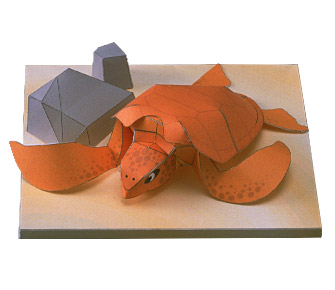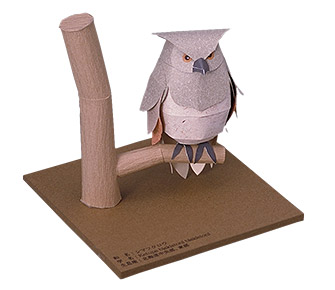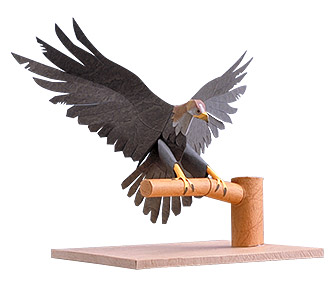Japanese River Otter
Papercraft kit : The Japanese riverotter, urgent efforts are going on to verify the existence.
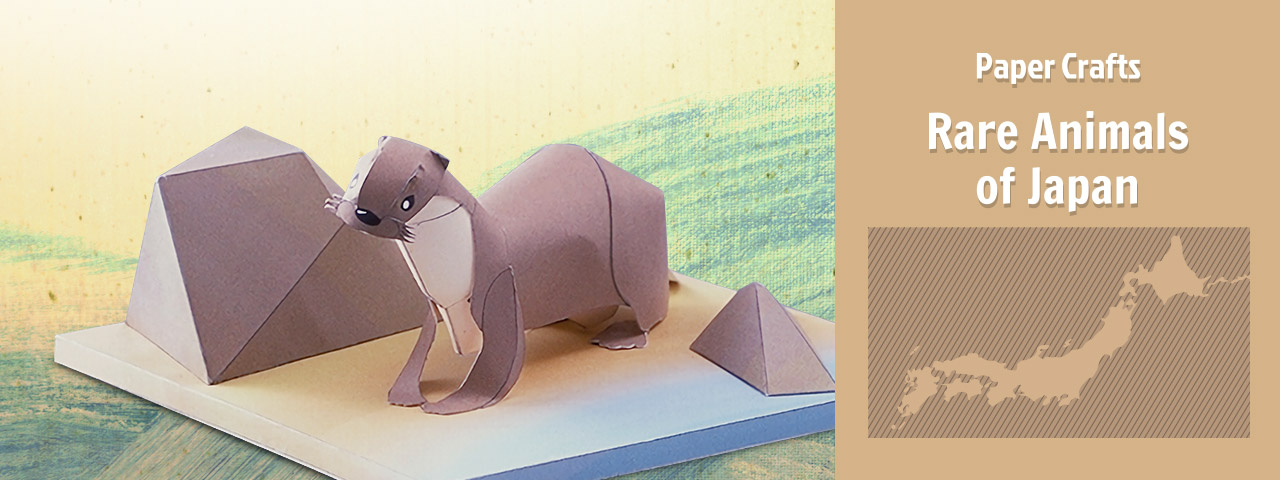
The Japanese River Otter, a member of the weasel family, reaches approximately 70 centimeters (28 inches) in length. The creature once widely inhabited midstream and downstream regions along rivers throughout Japan. However, its number has drastically diminished due to excessive pelt hunting.
The last official sighting of the Japanese River Otter was in the southern part of Kochi Prefecture in 1979, and since that time, no sighting of the otter has ever been confirmed. An official search to ensure its survival has recently gone under way.
The Japanese River Otter is currently classified as a ,Extinct [EX], species in the Red List.
The species was eventually considered to be the real source of the Japanese mythological figure, “Kappa”. Assembly instructions for paper sculptures of the Japanese River Otter as well as photo images of completed sculptures may be downloaded at this web site.
* Sightings of Witness of Japanese River Otter have not been recorded since 1979. However, research to verify of its existence is still being continued today.
* A wild otter was filmed on Nagasaki Prefecture's Tsushima Island in February 6th, 2017, marking the first sighting in Japan in 38 years.
Download - Parts sheet & InstructionsThis data was released in September, 1999.
Japanese River Otter - Animal Guide

- Japanese River Otter - Mustelidae
- Lutra nippon
- 65 to 80 cm (26 to 32 in.) long
- RED DATA BOOK (RDB) categories : Extinct [EX]
The Japanese River Otter (Lutra nippon), a member of the weasel family, is a nocturnal carnivore reaching 65 to 80 centimeters (26 to 30 inches) in length at maturity. The animal is characterized by its webbed-feet and streamlined body with dark brown back and light brown belly, as well as by its thick, long tail, which is very common to the weasel family. The species inhabits midstream and downstream regions along rivers and becomes active at night, searching for fish, shrimp, and crabs for prey. While the animal hunts for food mainly in the water, it spends the rest of its time on land sleeping and rearing its young.
Once abundantly dispersed throughout Japan, the Japanese River Otter was reduced to very small numbers during the Meiji and Taisho eras due to the hunting of its fur and liver, which was applied as a medicine for patients with Tuberculosis. Moreover, environmental changes, such as the decrease of habitats, breeding grounds, and prey due to large-scale river-related construction and industrial and agricultural water contamination, have accelerated the decrease of the animal. Many of the species were also killed by dogs, their natural enemies, as well as by cars.
Due to serious concerns about its possible extinction, the Japanese River Otter was designated as a special natural treasure of Japan in 1965. However, the last official sighting of the otter was in Kochi Prefecture in 1979, and the existence of the creature has not been corroborated since then. Non-governmental organizations as well as the Environment Agency and prefecture and city governments have commissioned searches by specialists in the field to ensure its survival. Recent sightings of the Japanese River Otter have been reported by various sources, but have not yet been officially confirmed.
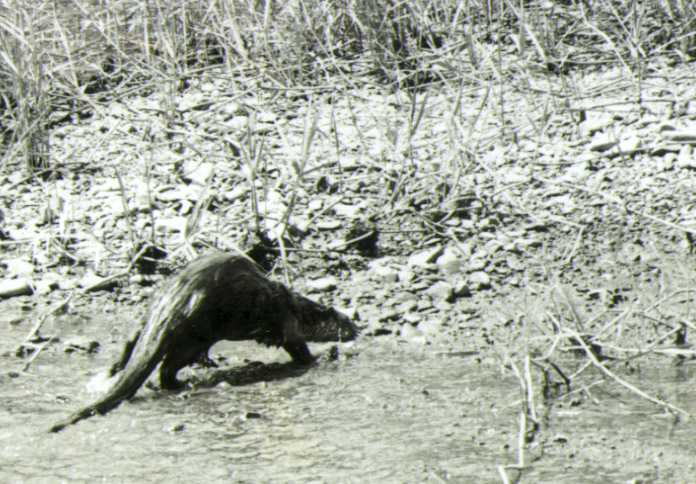
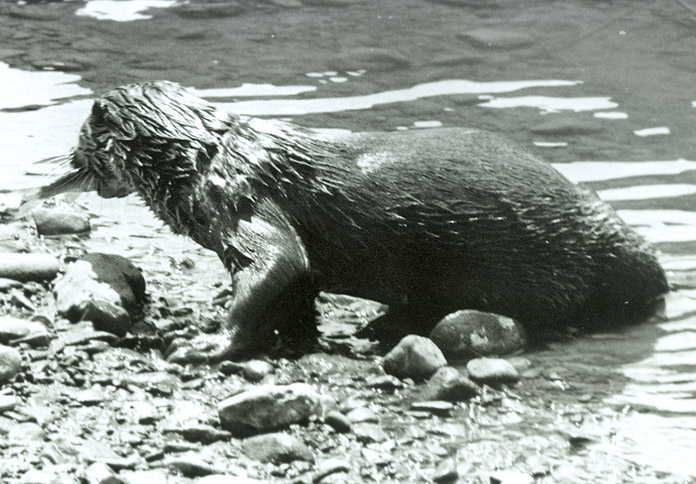
Habitat
The Japanese River Otter has widely inhabited river regions throughout Japan, encompassing the main islands, Hokkaido, Honshu, Shikoku, and Kyushu. It mainly inhabits midstream and downstream regions. In order to meet the needs of its active life and high energy consumption, which require a large amount of food, the otter travels over 10 kilometers (6.25 miles) along rivers and seashores where prey is plentiful. Although it is believed to live only in the southern region of Shikoku island, sightings of the animal have not been officially confirmed.
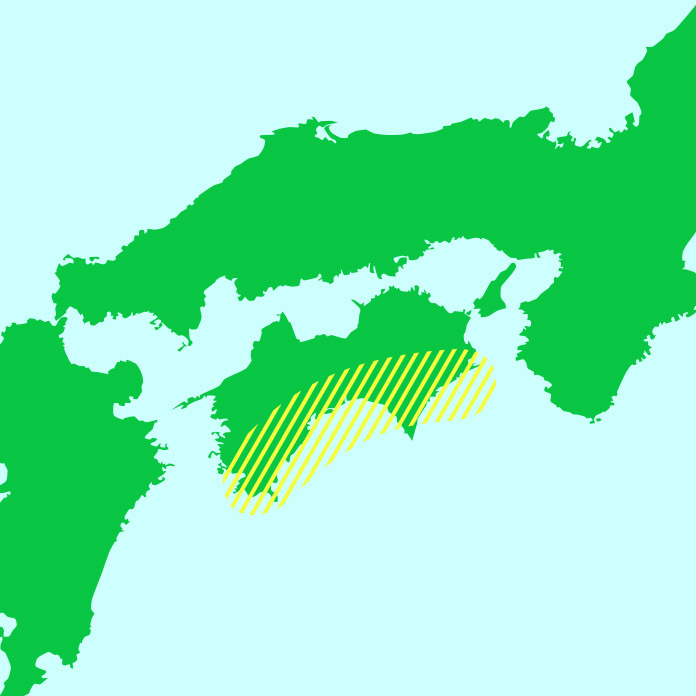
Photographed by Tetsushi Toyonaga
About RED DATA BOOK
The Red Data Book is a report compiled by the Environment Agency classifying various threatened animals in Japan and their present status. From a biological viewpoint, the Environment Agency has evaluated the extinction risk level of each individual taxon and compiled a list for the Red Data Book. However, the Book possesses no legal power to enforce regulations concerning threatened species.
The Red Data Book is broadly employed as fundamental information for advancing the preservation of threatened wild animals.
| EXTINCT | EX | A taxon considered to have become extinct in Japan. |
|---|---|---|
| EXTINCT IN THE WILD | EW | A taxon known to survive only under conservation or in captivity. |
| CRITICALLY ENDANGERED | CR | A taxon facing an extremely high risk of extinction in the wild in the immediate future. |
| ENDANGERED | EN | A taxon facing a very high risk of extinction in the wild in the near future though not critically endangered. |
| VULNERABLE | VU | A taxon facing a high risk of extinction in the wild in the medium-term future though not critically endangered or endangered. |
| NEAR THREATENED | NT | A taxon which can qualify for VULNERABLE in the future depending on its habitat conditions, although it is not facing a high risk of extinction at this present stage. |
| DATA DEFFICIENT | DD | A taxon about which there is not adequate information to make a direct, or indirect, assessment of its risk of extinction. |
| THREATENED LOCAL POPULATION | LP | A taxon facing a high risk of extinction in a certain locality among its limited specific habitats. |
From Environment Agency press materials





